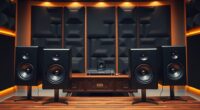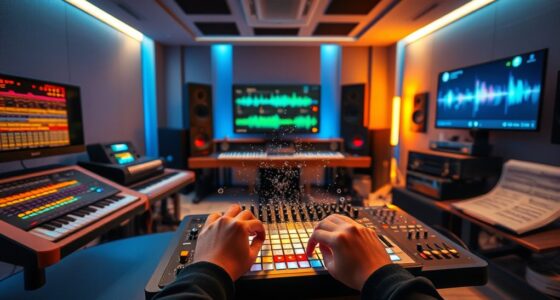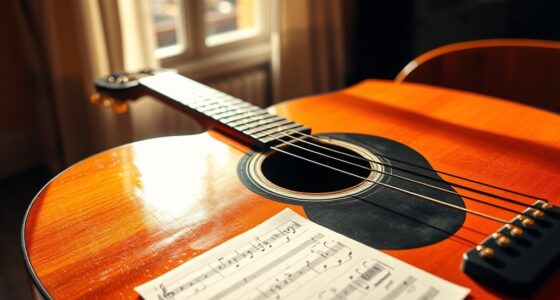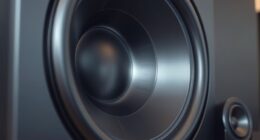You can turn everyday objects into unique percussion by exploring their history, experimenting with common materials like boxes, bottles, or cans, and using different striking techniques. Incorporate body percussion and unconventional rhythms to add variety. Recording and amplifying these sounds enhances your music, while inspiration from cultural traditions can spark new ideas. Keep experimenting, and you’ll discover endless creative possibilities to craft compelling beats from familiar items. If you continue exploring, you’ll uncover even more innovative techniques.
Key Takeaways
- Use household items like cans, bottles, and boxes to create diverse percussion sounds for Foley and beat production.
- Experiment with striking techniques and object placement to achieve varied textures and rhythmic effects.
- Modify objects with tape, rubber bands, or fabric to alter resonance and pitch creatively.
- Record with quality microphones and experiment with mic placement to capture the unique character of each object.
- Incorporate these sounds into compositions using layering, editing, and effects to craft innovative percussion beats.
The History of Found Object Percussion
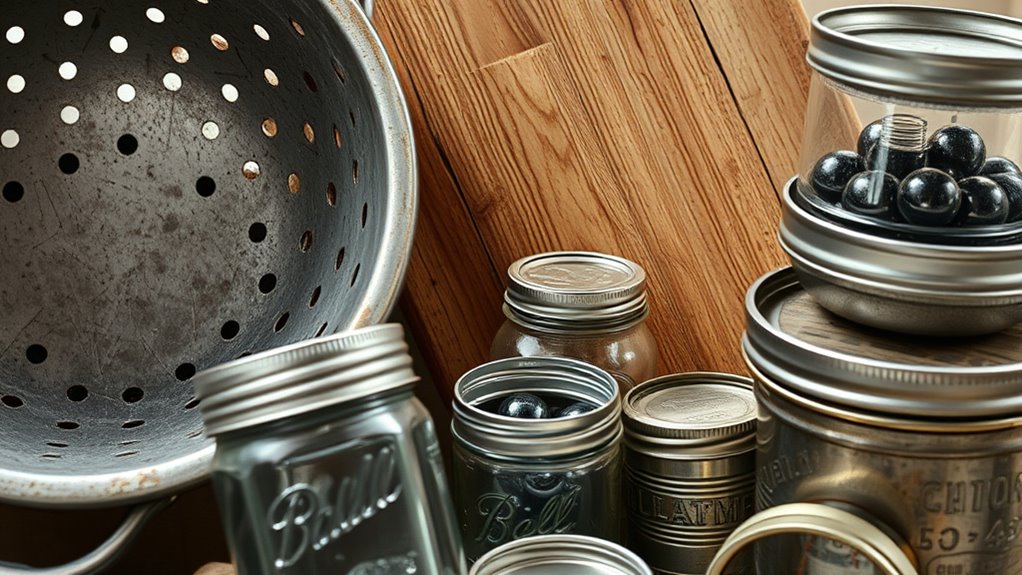
Found object percussion has a rich history that dates back to early human cultures, who used everyday items to create rhythm and music. You can see how innovative sound exploration began as people discovered new ways to produce different tones and textures from familiar objects. These early practices laid the foundation for cultural percussion traditions that still influence music today. Throughout history, communities around the world repurposed items like stones, sticks, and pottery to craft unique sounds, blending practicality with artistry. By using what was available, early percussionists transformed ordinary objects into powerful instruments that carried cultural significance. This tradition of improvisation and resourcefulness highlights how everyday items can serve as the roots of musical expression and innovation.
Essential Materials for DIY Percussion Instruments
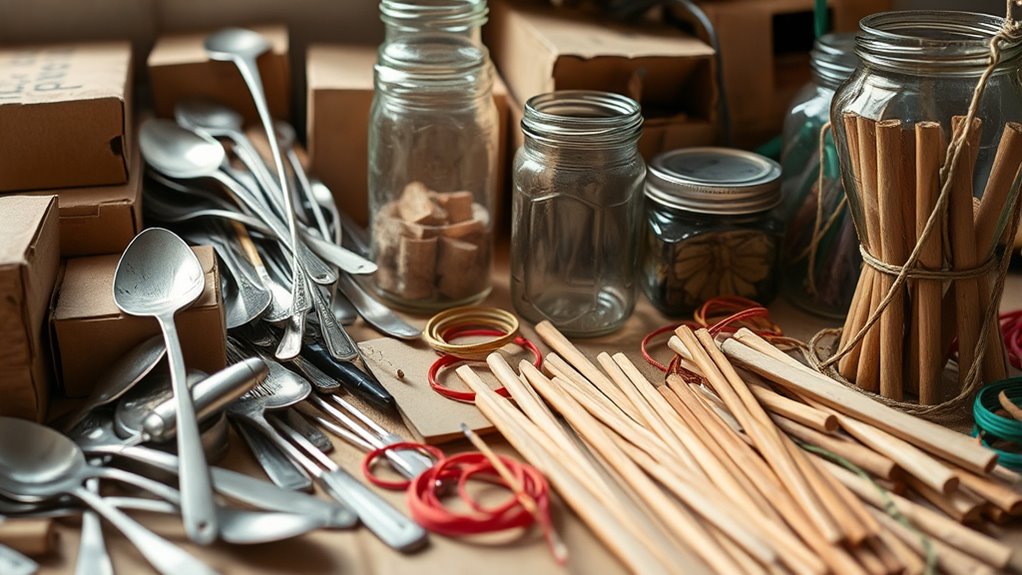
To create effective DIY percussion instruments, you’ll need a selection of simple, readily available materials. Your material selection is vital for achieving different sounds and textures. Common items include cardboard boxes, plastic bottles, metal cans, and wooden spoons. These materials can be easily repurposed to produce a variety of tones. For sound modification, consider adding rubber bands, tape, or fabric to change resonance and pitch. Using different sizes and shapes also influences the sound quality. Keep in mind that lightweight materials produce higher-pitched sounds, while heavier objects create deeper tones. By choosing versatile, accessible materials, you can experiment with sound and craft percussion instruments suited to your creative goals. The right material selection makes all the difference in crafting effective, unique DIY percussion. Proper material choice can also impact the sound quality and durability of your instruments.
Techniques for Creating Unique Rhythms
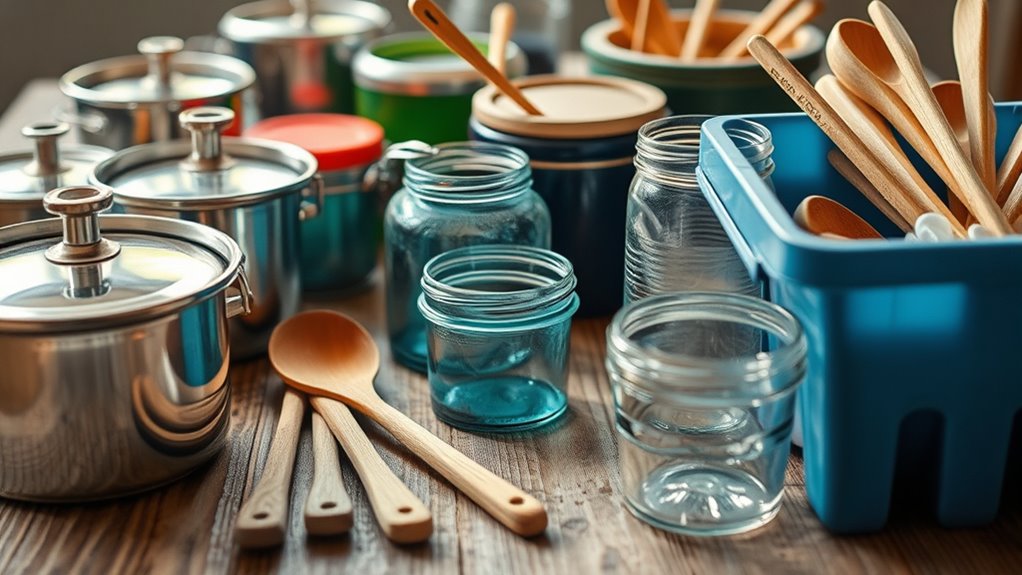
Experimenting with different striking techniques is key to creating unique rhythms with your DIY percussion instruments. Incorporate body percussion, like claps, snaps, or stomps, to add layers and variety to your sound. Vary your strikes—use fingertips, palms, or knuckles—to produce different textures. Don’t shy away from exploring unconventional time signatures; they challenge your rhythm and make your compositions more interesting. Combine simple patterns with irregular accents, shifting between meters like 5/8 or 7/8 to keep your audience engaged. You can also experiment with syncopation by emphasizing off-beats or creating polyrhythms. These techniques help transform everyday objects into dynamic, expressive instruments, giving your rhythms a fresh, inventive edge. Being mindful of conflict resolution skills can help you navigate any creative disagreements during your jam sessions.
Recording and Amplifying Homemade Percussion Sounds
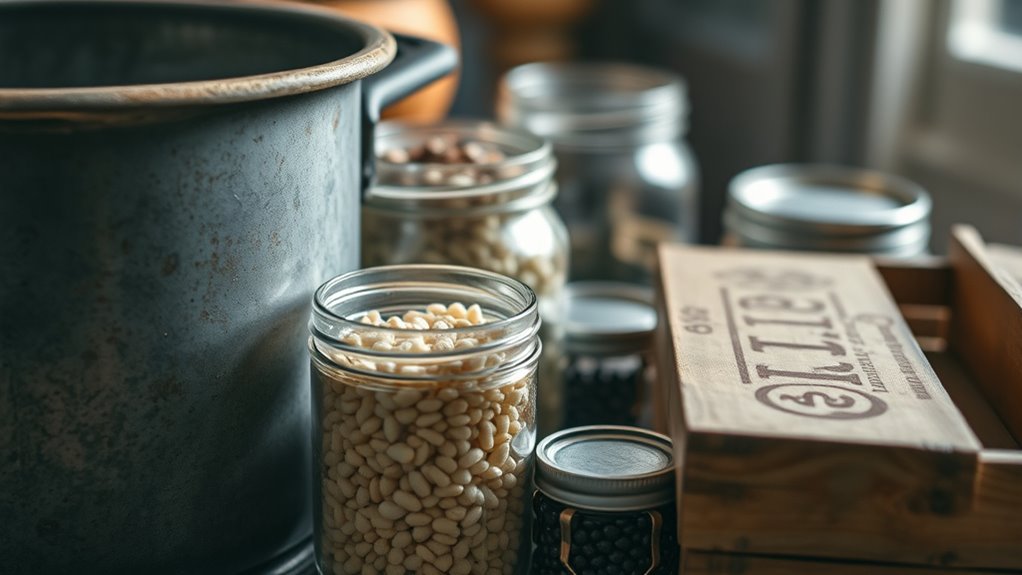
Capturing the unique sounds of your homemade percussion instruments requires the right recording techniques and equipment. Use a quality microphone placed close to the object to capture detailed tones, or experiment with distance for ambient effects. Record in a quiet environment to minimize noise, and consider multiple takes for variety. To achieve innovative sound design, experiment with different mic placements and processing. For live performance integration, ensure your setup is portable and reliable. Here’s a visual to help you picture the setup:
| Equipment | Purpose |
|---|---|
| Dynamic Microphone | Captures loud, sharp sounds |
| Condenser Microphone | Picks up subtle nuances |
| Portable Recorder | Flexibility for on-the-go recording |
| Audio Interface | Connects microphones to devices |
| Amplifier or PA System | Amplifies sounds for live settings |
Additionally, understanding the market growth in AI technology can inspire innovative approaches to sound processing and live performance enhancements.
Inspiring Examples of Everyday Object Percussion in Music
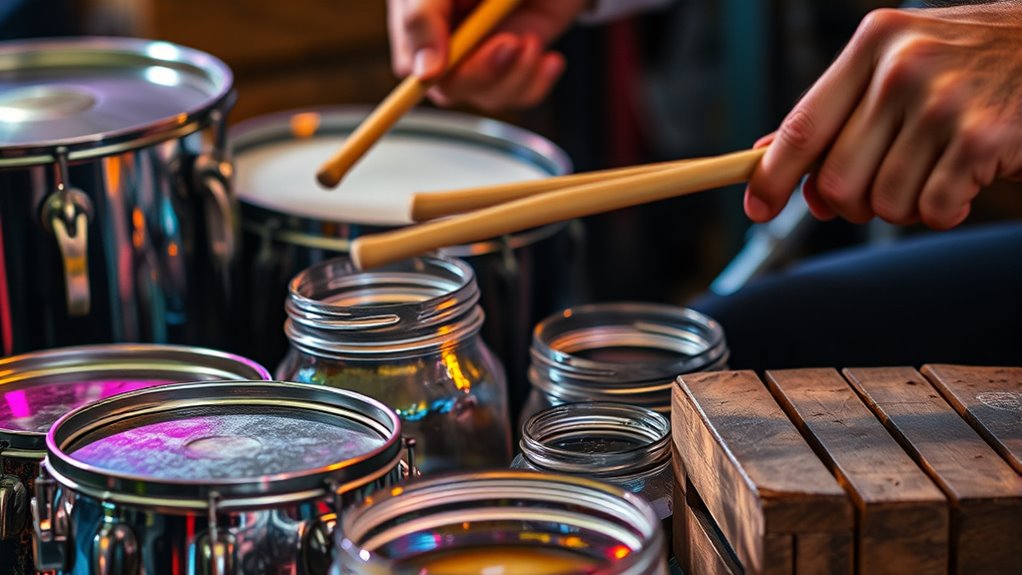
Many artists have turned everyday objects into innovative percussion instruments, creating memorable sounds that enrich music across genres. These examples showcase how resourcefulness and creativity can push the boundaries of sound design. For instance, artists incorporate recycled materials or household items to produce unique textures and rhythms. This approach often draws inspiration from cultural percussion traditions, honoring heritage while redefining modern soundscapes. Such innovations inspire both musicians and audiences alike, emphasizing sustainability and originality. By exploring these inspiring examples, you see how ordinary objects can transform into powerful tools for expression. They remind you that innovation often begins with simple, accessible materials, fostering a deeper connection to music and cultural storytelling. Additionally, understanding the Vortex can enhance the creative process by aligning your intentions and fostering emotional connection with your craft.
Frequently Asked Questions
How Can I Ensure Safety When Using Unconventional Objects as Percussion Instruments?
When using unconventional objects as percussion instruments, you should prioritize safety. Always wear appropriate safety gear like ear protection and gloves to prevent injuries. Conduct a hazard assessment beforehand to identify potential risks, such as sharp edges or fragile surfaces. Test objects gently first, and handle them carefully during use. By staying cautious and prepared, you guarantee a safe and enjoyable experience while exploring creative percussion.
What Are the Best Cleaning Methods for Homemade Percussion Instruments?
To keep your homemade percussion instruments in top shape, focus on proper cleaning techniques while considering material considerations. Use a soft, damp cloth for wooden or plastic parts, avoiding excess moisture. For metal objects, gently wipe with a dry or slightly damp cloth. Avoid harsh chemicals that could damage delicate materials. Regular cleaning prevents buildup and preserves sound quality, ensuring your instruments stay safe and functional for ongoing use.
How Do I Select the Right Objects for Specific Sound Qualities?
Imagine your objects as tiny sound factories, each with unique material textures and resonant qualities. To select the right ones, you’ll want to test how different textures—from smooth to rough—affect sound. Feel how the material responds when struck, and listen for the resonance. Choose objects that produce the desired tone, whether sharp and bright or deep and warm, based on their material textures and resonant qualities.
Can I Incorporate Electronic Elements Into DIY Percussion Instruments?
Yes, you can incorporate electronic integration into your DIY percussion instruments. Use sensors or pickups to capture sound vibrations, then connect them to a mixer or effects processor for sound modulation. This allows you to blend acoustic and electronic elements seamlessly, creating unique textures. Experiment with different electronic components to customize your percussion’s sound, giving you greater control and versatility in your musical creations.
What Are Some Eco-Friendly Alternatives for Creating Percussion From Recyclable Materials?
Imagine turning plastic bottles into drums, creating eco-friendly sound sources from recyclable materials. You can repurpose cardboard tubes for shakers or use metal cans for cymbals, reducing waste and crafting unique percussion instruments. These recyclable materials are excellent eco-friendly sound sources, allowing you to build percussion instruments sustainably. By choosing everyday objects, you not only reduce environmental impact but also develop innovative sounds that add character to your music.
Conclusion
Did you know that some of the most famous percussion sounds were born from everyday objects? By exploring this DIY approach, you can discover endless creative possibilities and add a personal touch to your music. Whether it’s a trash can lid or a set of glass jars, your unique percussion can stand out. So grab some objects, experiment, and turn ordinary items into extraordinary rhythms that inspire and captivate your audience.


